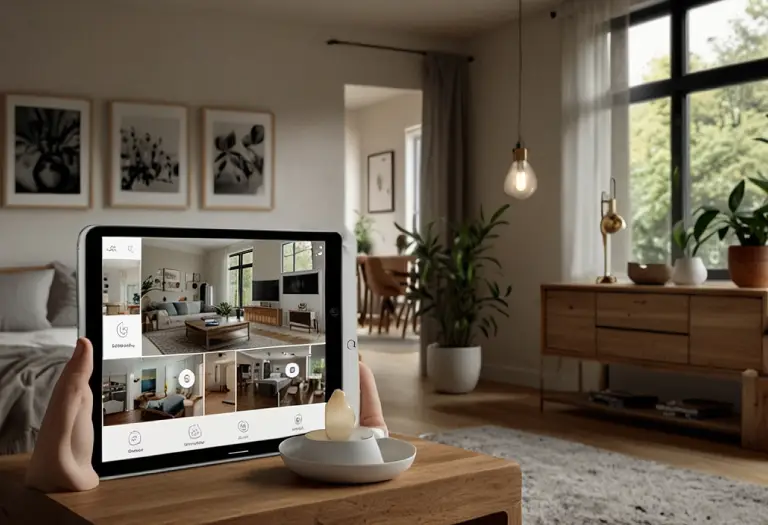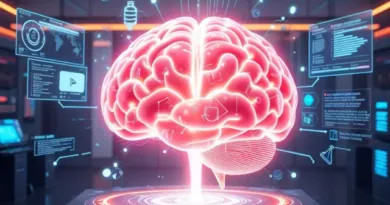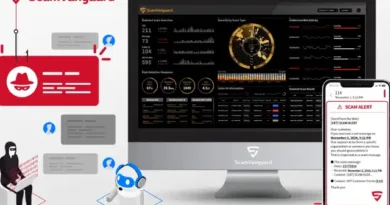What is Smart Technology and How It Enhances Everyday Life
Understanding Smart Technology: Transforming Everyday Experiences
Smart technology integrates artificial intelligence (AI), data analytics, and interconnected devices to create systems that are more intuitive, efficient, and responsive. From the wearable fitness trackers monitoring our health to AI-powered assistants that make our homes and workplaces smarter, smart technology has become central to modern living.
What Defines Smart Technology?
At its core, smart technology involves devices that can analyze and react to data, often using machine learning and AI to learn from user interactions and adapt their responses. These devices communicate through the Internet of Things (IoT), a network of connected devices that share data and operate autonomously to improve efficiency. Unlike traditional tech, smart devices are designed to make decisions, respond to voice commands, and even predict user needs.
Everyday Applications of Smart Technology
Smart technology applications are diverse, ranging from home and healthcare to industries and cities, each bringing specific benefits to our daily lives:
1. Smart Homes: Making Daily Living Easier and Safer

In smart homes, IoT devices like smart thermostats, lights, and security systems create an interconnected environment that enhances comfort, safety, and convenience. For example, smart thermostats can optimize heating and cooling based on our habits, cutting energy costs while maintaining comfort. Smart security systems, equipped with cameras and sensors, offer real-time monitoring, sending alerts directly to homeowners’ devices for increased peace of mind.
View More: Smart Home Technologies – Read more about McKinsey’s insights into smart home solutions.
2. Healthcare and Wellness: Personalizing and Enhancing Care

Smart technology in healthcare improves patient care by enabling real-time monitoring and remote consultations. Wearable devices track health metrics, such as heart rate and sleep patterns, alerting users and healthcare providers to potential health issues. Telemedicine has also expanded access to healthcare, allowing people to receive consultations without physical visits. Hospitals increasingly rely on IoT systems for patient monitoring and resource management, making healthcare more efficient and proactive.
View More: Impact of IoT in Healthcare – Learn more about smart technology in healthcare.
3. Industry and Manufacturing: Optimizing Production and Reducing Downtime

In industries, smart technology enhances efficiency and productivity by automating processes. For instance, IoT sensors in manufacturing monitor equipment health and predict maintenance needs, reducing unexpected downtime. Smart technology in agriculture uses sensors to monitor crop health, optimizing water and pesticide use, thus boosting yield and reducing environmental impact. These applications contribute to sustainability by conserving resources and minimizing waste.
4. Smart Cities: Improving Urban Living

Smart technology enables cities to manage resources and services more effectively. Smart traffic systems, for example, use sensors to manage congestion by adjusting traffic signals based on real-time data. Smart waste management systems monitor bin levels to optimize collection schedules, reducing energy use and costs. Smart grids help cities distribute electricity efficiently, integrating renewable energy sources for a sustainable energy supply.
View More: McKinsey’s Smart Cities Report – Discover more on how smart technology is shaping cities.
Benefits of Smart Technology in Day-to-Day Life
Convenience and Accessibility: Voice-activated devices like Amazon Alexa and Google Assistant allow users to control home functions, set reminders, or play music with simple voice commands, enhancing ease of use.
Energy Efficiency and Cost Savings: Smart thermostats and lighting systems adjust based on occupancy or schedules, reducing energy consumption and utility bills. This efficiency extends to industrial and agricultural applications, where smart devices help conserve water, energy, and other resources.
Improved Security: Smart home security systems offer real-time monitoring, remote access, and alerts, making home security more manageable and reliable. Additionally, smart cities benefit from enhanced safety with surveillance systems and emergency response automation.
Health and Wellness: Wearable technology encourages a proactive approach to health by tracking vital signs, enabling early detection of health issues, and promoting preventive care.
Personalized Experiences: AI and machine learning personalize services by adapting to user habits and preferences. Smart TVs, for instance, recommend content based on viewing history, while e-commerce platforms suggest products based on previous purchases.
Potential Challenges of Smart Technology
Despite its benefits, smart technology comes with certain challenges, particularly concerning privacy and security. With devices collecting vast amounts of personal data, the risk of cyber-attacks increases. Many smart devices rely on continuous internet connectivity, which can expose users to data breaches. The challenge is to maintain robust security measures to protect users’ data and ensure privacy.
Another concern is over-reliance on technology, which could lead to reduced human interaction and potential job displacement in automated industries. Balancing these concerns with smart technology’s benefits will be crucial as this field continues to evolve.
Future of Smart Technology: What’s Next?
As technology advances, smart devices are becoming even more integrated into daily life, promising increased convenience, efficiency, and connectivity. Innovations like 5G networks, advanced AI, and improved IoT infrastructure are set to make smart technology faster, more responsive, and increasingly energy-efficient.
Expectations include:
Advanced Voice Commands: More seamless voice interaction for controlling multiple devices simultaneously.
Enhanced Personalization: AI will continue to evolve, providing users with even more personalized experiences in areas like healthcare, fitness, and shopping.
Greater Security: Manufacturers are likely to prioritize security, developing smarter, more secure systems to protect user data and prevent unauthorized access.External Resource: CitizenSide’s Overview on Smart Tech – For more on the growth and impact of smart technology.
Smart technology is transforming the way we live, work, and interact with the world. As it continues to develop, it promises to make life more efficient, secure, and sustainable. By understanding and managing the benefits and challenges, individuals and communities can make the most of this evolving field.
Also Read: AI in Everyday Technology – Reshaping Consumer Behavior and Industry Standards







Its like you read my mind You appear to know so much about this like you wrote the book in it or something I think that you can do with a few pics to drive the message home a little bit but instead of that this is excellent blog A fantastic read Ill certainly be back